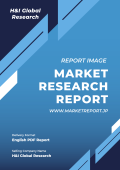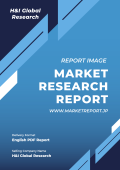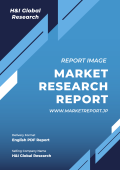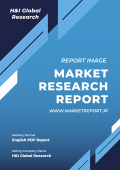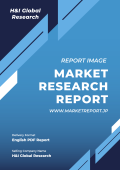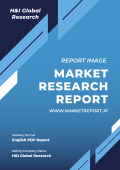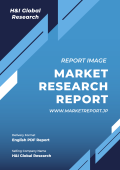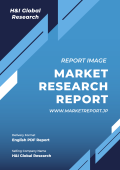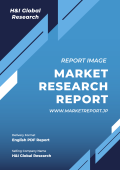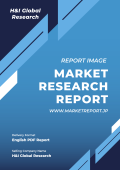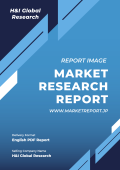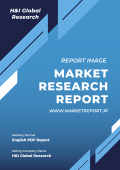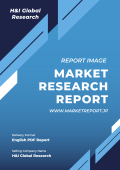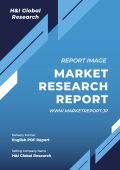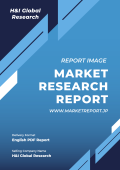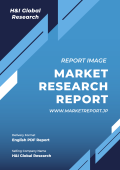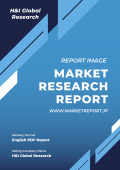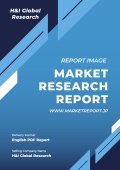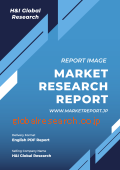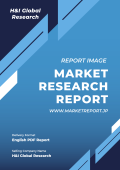2024年の世界のハードセルツァー市場規模は79億米ドル。今後、IMARC Groupは、市場は2033年までに206億米ドルに達し、2025年から2033年までのCAGRは11.16%になると予測しています。現在、北米が市場を支配しており、2024年の市場シェアは81.5%以上です。市場成長の背景には、健康志向への合致、低カロリー・低糖質オプションへの需要の高まり、多様なフレーバーの提供、環境に配慮したパッケージの使用と戦略的マーケティング、特に都市部における若者の間での人気の高まりなどがあります。
ハードセルツァーはビールに似た発泡性飲料で、アルコール度数は約5%。きび糖や麹を原料に、炭酸水と巧みにブレンドし、さまざまな香料を加えた爽快な飲み物です。低カロリー、低炭水化物で知られ、健康志向の消費者に好まれます。通常、ビールやワインのような他のアルコール飲料に比べて、炭水化物やカロリーが少ない。さらに、ハードセルツァーはグルテンフリーであることが多く、グルテン過敏症の人にも適しています。現在、様々な種類のハードセルツァーが販売されており、柑橘系からベリー系まで幅広いフレーバーがあり、多様な味覚嗜好に対応しています。
世界のハードセルツァー市場は、低カロリーでグルテンフリーのアルコール飲料に対する消費者の嗜好の変化に影響を受けています。これは、健康とウェルネスのトレンドの高まりと、ハードセルツァーがより軽い選択肢であるという認識が相まって、さらに後押ししています。さらに、消費者の一人当たり所得の増加により、多様で爽やかなフレーバーに対する需要が高まっていることも、市場の成長を加速させています。これとは別に、ソーシャルメディアと有名人の推薦の影響がハードセルターの知名度と採用を押し上げ、市場成長に弾みをつけています。さらに、持続可能性への注目の高まりにより、主要企業は環境意識の高い消費者の共感を得るために環境に優しいパッケージを使用せざるを得なくなり、これが市場の成長を促進しています。これに伴い、オンライン・オフラインを問わず流通チャネルの拡大や急速な技術進歩が市場成長を後押ししています。
硬質炭酸飲料市場の動向/促進要因
低カロリー・グルテンフリー飲料に対する消費者の嗜好の高まり
低カロリーやグルテンフリーのアルコール飲料に対する消費者の嗜好の高まりにより、世界のハードセルツァー市場は堅調な成長を遂げています。健康志向の消費者は、味や楽しさを損なうことなく、健康目標に沿った選択肢を求めるようになっています。一般的に炭酸水、アルコール、天然フレーバーで作られるハードセルツァーは、ビールやカクテルのような伝統的なアルコール飲料に比べて軽くてカロリーが低いと思われがちで、魅力的な提案をしています。さらに、ハードセルツァーにはグルテンフリーの原料が含まれているため、グルテン過敏症の人やグルテンフリーの食事療法を実践している人にも対応でき、より幅広い層にアピールすることができます。
健康志向の高まり
世界のハードセルツァー市場の成長は、消費者の健康志向の高まりにも起因しています。人々の健康志向が高まり、健康が優先されるようになったため、健康的なライフスタイルに合った飲料の需要が高まっています。ハードセルツァーは、従来のアルコール飲料に代わる健康飲料として販売されることが多く、人気を博しています。ハードセルツァーはアルコール度数が低く、軽めの選択肢であるという認識は、アルコール摂取の節度を求める消費者にアピールしています。さらに、ハードセルツァーの中には、本物の果実エキスのような天然成分を配合し、栄養価と爽やかな味を加えたものもあります。ハードセルツァーと健康的なライフスタイルの選択との間にポジティブな関連があることから、個人の健康へのコミットメントを損なうことなくアルコール飲料を楽しみたい消費者の間で採用が進んでいます。
多様で爽やかなフレーバーの魅力
世界のハードセルツァー市場の拡大は、多様で爽やかなフレーバーの魅力によってさらに促進されています。メーカーは、消費者の好みや嗜好の変化に対応するため、幅広いフレーバーオプションを提供することの重要性を認識しています。レモン、ライム、ベリーといった伝統的なフルーツ・フレーバーは依然として人気がありますが、トロピカル・フルーツ、ハーブ、ボタニカル・インフュージョンなど、よりエキゾチックで革新的な選択肢も市場に加わりました。このようなエキサイティングなフレーバー・プロファイルが入手可能になったことで、消費者の好奇心が刺激され、消費量の増加につながりました。さらに、ハードセルツァーはすっきりとした味わいのものが多く、そのままでもカクテルのミキサーとしても楽しみやすい。ハードセルツァー分野における絶え間ない製品革新とフレーバー実験が、消費者の探究心と斬新さを育み、さまざまな層でハードセルツァー飲料への関心を持続させています。
ハードセルツァーの業界セグメンテーション
IMARC Groupは、世界のハードセルツァー市場の各セグメントにおける主要動向の分析と、2025年から2033年までの世界、地域、国レベルでの予測を提供します。市場は、ABV含有量、包装材料、流通チャネル、フレーバー、地域に基づいて分類されています。
ABV含有量別の内訳
1%〜4.9
5%以上6.9%未満
7%以上
5%~6.9%が市場を支配
本レポートでは、ABV含有量に基づく市場の詳細な内訳と分析を提供しています。これには1%~4.9%、5%~6.9%、7%以上が含まれます。報告書によると、5%~6.9%が最大のセグメント。
アルコール度数5~6.9%セグメントは、幅広い消費者にアピールするこのセグメントの適度なアルコール度数によって、世界のハードセルツァー市場で支配的な勢力として浮上しています。さらに、このセグメントの人気は、さまざまなフレーバーとの組み合わせが可能で、幅広い消費者を魅了する多様な味覚プロファイルを可能にする汎用性によって後押しされています。さらに、アルコール度数5~6.9%は、責任ある飲酒と心のこもった嗜好を優先する消費者に適度なアルコール摂取を提供するため、健康とウェルネスのトレンドに適しています。さらに、このセグメントは様々な場面で社会的に受け入れられる選択肢であることも、広く普及する一因となっています。これに伴い、市場における戦略的な価格設定と入手のしやすさが、親しみやすく満足感のあるアルコール飲料を求める消費者にとって魅力的な選択肢となり、同分野の優位性と継続的な成長を後押ししています。
包装材料別の内訳:
缶
ガラス
その他
市場で最大のシェアを占める缶
本レポートでは、包装材に基づく市場の詳細な内訳と分析も提供しています。これには缶、ガラス、その他が含まれます。報告書によると、缶が最大のセグメントを占めています。
世界のハードセルツァー市場における缶セグメントの優位性は、いくつかの主要なドライバーに起因することができます。缶は利便性と携帯性を提供し、すぐに飲める選択肢を求める外出中の消費者にとって理想的な選択肢となります。また、缶は軽量で積み重ねが容易なため、アウトドアや社交の場での利用にも適しています。さらに、缶は光や酸素からの保護に優れているため、飲料の品質と味を保つことができます。これに伴い、缶は他の包装形態に比べて環境に優しく、持続可能性に対する消費者の意識の高まりに合致しています。さらに、缶詰は効率的な生産と流通を可能にし、コスト効率とハード炭酸飲料の普及に貢献します。さらに、缶にブランディングの機会を設けることで、企業は強力な視覚的存在感を確立し、消費者の認識とブランド・ロイヤルティに影響を与えることができます。
流通チャネル別内訳:
スーパーマーケットとハイパーマーケット
オンラインストア
その他
スーパーマーケットとハイパーマーケットが市場を独占
本レポートでは、流通チャネル別に市場を詳細に分類・分析しています。これにはスーパーマーケットとハイパーマーケット、オンラインストア、その他が含まれます。報告書によると、スーパーマーケットとハイパーマーケットが最大のセグメントを占めています。
世界のハードセルツァー市場におけるスーパーマーケットとハイパーマーケットの優位性は、これらの小売フォーマットの広範なリーチと広範な存在を含むいくつかの主要なドライバーに起因することができます。さらに、これらの店舗は1つの屋根の下で多様な製品を提供できるため、潜在的な顧客に対するハード炭酸飲料ブランドの認知度と露出度を高めることができます。これに伴い、これらの小売大手は、その強力なマーケティングおよびプロモーション能力を活用し、ハードセルツァーの認知度を高め、消費者を引きつけることで、売上を伸ばしています。さらに、確立されたサプライチェーンと流通ネットワークにより、需要の増加に対応した安定的かつ効率的な製品の流れが確保されています。さらに、ハイパーマーケットやスーパーマーケットでは、主要メーカーと提携や協力関係を結び、独占的な製品ラインを提供することで、顧客のロイヤルティとリピート購入を促進しています。これとは別に、これらの小売チャネルは、ワンストップショッピング体験を求める消費者の嗜好を利用し、ハードセルツァーを便利な飲料の追加品として位置づけています。
フレーバー別内訳
チェリー
グレープフルーツ
マンゴー
ライム
その他
チェリーが最大シェア
本レポートでは、フレーバーに基づく市場の詳細な分類と分析も行っています。これにはチェリー、グレープフルーツ、マンゴー、ライム、その他が含まれます。報告書によると、チェリーが最大セグメント。
世界のハードセルツァー市場におけるチェリーセグメントの優位性は、いくつかの主要なドライバーに起因することができます。チェリーは、幅広い消費者の共感を得られる親しみやすい風味を提供します。さらに、チェリーの自然な色と甘さ、関連する抗酸化特性は、より健康的な選択肢として認知され、健康とウェルネスのトレンドに合致しています。さらに、業界大手による効果的なマーケティング戦略が、チェリー風味のハードセルツァーに対する消費者の認識と嗜好を高めています。さらに、カクテルに混ぜることができる材料としてのチェリーの汎用性が、カクテル愛好家の間でその魅力を広げ、市場シェアをさらに押し上げています。さらに、チェリー・セグメントの成長を支えているのは、さまざまな消費シーンに対応できるよう、さまざまなサイズのパッケージが用意されていることです。これとは別に、チェリーは季節的なプロモーションや限定リリースに適しているため、消費者の興味を喚起し持続させ、競争の激しいハードセルツァー市場における優位性を確固たるものにしています。
地域別内訳
北米
米国
カナダ
アジア太平洋
中国
日本
インド
韓国
オーストラリア
インドネシア
その他
ヨーロッパ
ドイツ
フランス
イギリス
イタリア
スペイン
ロシア
その他
ラテンアメリカ
ブラジル
メキシコ
その他
中東・アフリカ
北米が明確な優位性を示し、最大のハードセルツァー市場シェアを獲得
本レポートでは、北米(米国、カナダ)、ヨーロッパ(ドイツ、フランス、英国、イタリア、スペイン、ロシア、その他)、アジア太平洋(中国、日本、インド、韓国、オーストラリア、インドネシア、その他)、中南米(ブラジル、メキシコ、その他)、中東・アフリカの主要地域市場についても包括的に分析しています。報告書によると、北米が最大の市場シェアを占めています。
北米が世界のハードセルツァー市場で支配的な地位を占めているのは、同地域の消費者がより健康的な飲料オプションを強く嗜好しているためです。さらに、健康志向の高まりが消費者の選択に大きな影響を与え、多くの個人がより軽く、爽やかで、カロリーの少ないアルコール飲料を求めるようになっています。さらに、北米市場では多様で革新的なフレーバーが入手可能なため、消費者の目新しさや味覚の探求心を刺激しています。これに伴い、同地域の飲料業界と流通ネットワークが確立しているため、ハードセルツァー製品の市場への浸透と入手が容易になっています。さらに、影響力のあるソーシャル・メディア・プラットフォームの積極的な存在と有名人の推薦が、ハードセルツァーの販売促進に重要な役割を果たし、人気に拍車をかけています。これとは別に、ハードセルツァーの様々な社会的機会に適合する適応性と、外出先での消費の利便性が、この急速に拡大する市場における北米の優位性に寄与しています。
競争環境:
世界のハードセルツァー市場の競争環境は、大きな市場シェアを獲得しようとする主要プレーヤー間の激しい競争によって特徴付けられます。ハードセルツァーの需要が急増し続ける中、多数の既存飲料メーカーと新規参入企業が消費者の関心とロイヤリティをめぐって争っています。各社は絶え間ない製品革新に取り組んでおり、進化する消費者の嗜好に対応するため、多様なフレーバーやパッケージ形式を導入しています。ブランドのポジショニングとマーケティング戦略は、この混雑した市場で製品を差別化する上で極めて重要な役割を果たします。さらに、流通網と戦略的パートナーシップは、市場へのリーチを拡大する上で重要な要素です。このような競争の中、企業は消費者の価値観やコンプライアンス基準に合わせるため、規制の動向や持続可能性の慣行も注視しています。市場の進化に伴い、ブランドの評判を高め、製品の品質を確保し、消費者の信頼を維持することは、ダイナミックなハードセルツァー市場において企業が競争力を確保し、繁栄するために不可欠です。
本レポートでは、市場の競争環境について包括的な分析を行いました。主要企業の詳細プロフィールも掲載しています。市場の主要企業には以下のようなものがあります:
Anheuser-Busch InBev
Barefoot Cellars (E. & J. Gallo Winery)
Blue Marble Cocktails Inc.
Ficks & Co
Future Proof Brands LLC
Hard Seltzer Beverage Company LLC (The Boston Beer Company Inc)
Lift Bridge Brewing Co.
Oskar Blues Brewery
White Claw Hard Seltzer
本レポートで扱う主な質問
1. ハードセルツァーとは何ですか?
2. 世界のハードセルツァーの市場規模は?
3. 2025年~2033年の世界のハードセルツァー市場の予想成長率は?
4. 世界の硬質炭酸飲料市場を牽引する主要因は?
5. ABV含有量に基づく世界のハードセルツァー市場の主要セグメントは?
6. ハードセルツァーの世界市場における包装材別の主要セグメントは?
7. ハードセルツァーの世界市場、流通チャネル別の主要セグメントは?
8. ハードセルツァーの世界市場、フレーバー別の主要セグメントは?
9. ハードセルツァーの世界市場における主要地域は?
10. ハードセルツァーの世界市場における主要プレイヤー/企業は?
Hard seltzer, akin to beer, is a sparkling beverage boasting an alcohol content of approximately 5% by volume. This invigorating drink is crafted from brewed cane sugar or malted rice, skillfully blended with soda water, and infused with different flavorings. It is known for its low calorie and low carbohydrate content, making them a preferred choice for health-conscious consumers. Typically, it contains fewer carbohydrates and calories compared to other alcoholic beverages like beer and wine. Additionally, hard seltzers are often gluten-free, making them suitable for individuals with gluten sensitivities. Currently, various types of hard seltzers are available, with a wide array of flavors ranging from citrus to berry, catering to diverse taste preferences.
The global hard seltzer market is influenced by shifting consumer preference for low-calorie and gluten-free alcoholic beverages. This is further supported by the rising trend of health and wellness, coupled with the perception of hard seltzers as a lighter option. Moreover, the escalating demand for diverse and refreshing flavors due to inflating consumer per capita income is accelerating the market growth. Apart from this, the influence of social media and celebrity endorsements has boosted the visibility and adoption of hard seltzers, which is providing a boost to the market growth. Furthermore, the increasing focus on sustainability has compelled key players to use eco-friendly packaging to resonate with environmentally conscious consumers, which, in turn, is facilitating the market growth. In line with this, the expansion of distribution channels, both online and offline, and rapid technological advancements are propelling the market growth.
Hard Seltzer Market Trends/Drivers:
Increasing consumer preference for low-calorie and gluten-free beverages
The global hard seltzer market has experienced robust growth due to the rising consumer preference for low-calorie and gluten-free alcoholic beverages. Health-conscious consumers are increasingly seeking options that align with their wellness goals without compromising on taste and enjoyment. Hard seltzers, typically made with carbonated water, alcohol, and natural flavors, present an attractive proposition as they are often perceived as lighter and less calorically dense compared to traditional alcoholic beverages like beer or cocktails. Furthermore, the inclusion of gluten-free ingredients in hard seltzers caters to individuals with gluten sensitivities or those who follow gluten-free diets, broadening the appeal of these products to a wider audience.
Rising trend of health and wellness
The growth of the global hard seltzer market can also be attributed to the prevailing trend of health and wellness among consumers. As people become more health-conscious and prioritize their well-being, there is a growing demand for beverages that align with their healthy lifestyle choices. Hard seltzers have gained popularity as they are often marketed as a healthier alternative to traditional alcoholic drinks. The perception of hard seltzers as a lighter option with lower alcohol content appeals to consumers who seek moderation in their alcohol consumption. Additionally, some hard seltzers are infused with natural ingredients like real fruit extracts, adding a touch of nutritional value and a refreshing taste. The positive association between hard seltzers and healthier lifestyle choices has resulted in increased adoption among consumers who wish to enjoy alcoholic beverages without compromising their commitment to personal wellness.
Appeal of diverse and refreshing flavors
The global hard seltzer market's expansion has been further driven by the appeal of diverse and refreshing flavors. Manufacturers have recognized the importance of offering a wide range of flavor options to cater to varying consumer tastes and preferences. Traditional fruit flavors like lemon, lime, and berry remain popular, but the market has evolved to include more exotic and innovative options, such as tropical fruits, herbs, and botanical infusions. The availability of these exciting flavor profiles has piqued consumer curiosity and contributed to increased consumption. Additionally, hard seltzers often carry a clean and crisp taste, making them easy to enjoy both on their own and as mixers in cocktails. The continuous product innovation and flavor experimentation in the hard seltzer segment has fostered a sense of exploration and novelty among consumers, driving sustained interest in these beverages across different demographics.
Hard Seltzer Industry Segmentation:
IMARC Group provides an analysis of the key trends in each segment of the global hard seltzer market, along with forecast at the global, regional, and country levels from 2025-2033. The market has been categorized based on ABV content, packaging material, distribution channel, flavor, and region.
Breakup by ABV Content:
1% to 4.9%
5% to 6.9%
7% and Above
5% to 6.9% dominates the market
The report has provided a detailed breakup and analysis of the market based on the ABV content. This includes 1% to 4.9%, 5% to 6.9%, and 7% and above. According to the report, 5% to 6.9% represented the largest segment.
The 5 to 6.9% ABV segment has emerged as the dominant force in the global hard seltzer market, driven by the moderate alcohol content of this segment that appeals to a broad range of consumers. Additionally, the segment's popularity is fueled by its versatility in pairing with various flavors, allowing for a diverse range of taste profiles that attract a wide audience. Moreover, the 5 to 6.9% ABV aligns well with the health and wellness trend, as it offers a moderate alcohol intake for consumers who prioritize responsible drinking and mindful indulgence. Furthermore, the segment's position as a socially acceptable choice for various occasions contributes to its widespread adoption. In line with this, the strategic pricing and accessibility in the market make it an appealing option for consumers seeking an approachable and satisfying alcoholic beverage, propelling its dominance and continued growth.
Breakup by Packaging Material:
Cans
Glass
Others
Cans hold the largest share in the market
A detailed breakup and analysis of the market based on the packaging material has also been provided in the report. This includes cans, glass, and others. According to the report, cans represented the largest segment.
The dominance of the cans segment in the global hard seltzer market can be attributed to several key drivers. Cans offer convenience and portability, making them an ideal choice for on-the-go consumers seeking a ready-to-drink option. The lightweight and easily stackable nature of cans also enhances their appeal for outdoor activities and social gatherings. Additionally, cans provide better protection against light and oxygen, preserving the quality and taste of the beverage, which is crucial for a product like hard seltzer that heavily relies on flavor profiles. In line with this, cans are more environmentally friendly compared to other packaging formats, aligning with the growing consumer consciousness towards sustainability. Additionally, the canning process allows for efficient production and distribution, contributing to cost-effectiveness and wider availability of hard seltzers. Furthermore, branding opportunities on cans enable companies to establish a strong visual presence, influencing consumer perception and brand loyalty.
Breakup by Distribution Channel:
Supermarkets and Hypermarkets
Online Stores
Others
Supermarkets and hypermarkets dominate the market
The report has provided a detailed breakup and analysis of the market based on the distribution channel. This includes supermarkets and hypermarkets, online stores, and others. According to the report, supermarkets and hypermarkets represented the largest segment.
The dominance of supermarkets and hypermarkets in the global hard seltzer market can be attributed to several key drivers, including the extensive reach and widespread presence of these retail formats. Moreover, the ability of these outlets to offer a diverse range of products under one roof allows for greater visibility and exposure of hard seltzer brands to potential customers. In line with this, these retail giants often leverage their strong marketing and promotional capabilities to create awareness and attract consumers towards hard seltzers, thereby boosting sales. Additionally, their established supply chain and distribution networks ensure a steady and efficient flow of products to meet growing demand. Furthermore, hypermarkets and supermarkets often engage in partnerships and collaborations with key manufacturers to offer exclusive product lines, driving customer loyalty and repeat purchases. Apart from this, these retail channels capitalize on consumer preferences for one-stop shopping experiences, positioning hard seltzers as a convenient addition to their beverage offerings.
Breakup by Flavor:
Cherry
Grapefruit
Mango
Lime
Others
Cherry holds the largest share in the market
A detailed breakup and analysis of the market based on the flavor has also been provided in the report. This includes cherry, grapefruit, mango, lime, and others. According to the report, cherry represented the largest segment.
The dominance of the cherry segment in the global hard seltzer market can be attributed to several key drivers. Cherries offer a popular and familiar flavor profile that resonates with a wide range of consumers. Moreover, cherry's natural color and sweetness and associated antioxidant properties contribute to its perception as a healthier choice, aligning with the health and wellness trend. Additionally, effective marketing strategies by major players in the industry have heightened consumer awareness and preference for cherry-flavored hard seltzers. Moreover, the versatility of cherry as a mixable ingredient in cocktails has broadened its appeal among cocktail enthusiasts, further boosting its market share. Furthermore, the cherry segment's growth is supported by its availability in various packaging sizes, catering to different consumption occasions. Apart from this, the cherry's suitability for seasonal promotions and limited-edition releases creates excitement and sustains consumer interest, solidifying its dominance in the competitive hard seltzer market.
Breakup by Region:
North America
United States
Canada
Asia Pacific
China
Japan
India
South Korea
Australia
Indonesia
Others
Europe
Germany
France
United Kingdom
Italy
Spain
Russia
Others
Latin America
Brazil
Mexico
Others
Middle East and Africa
North America exhibits a clear dominance, accounting for the largest hard seltzer market share
The report has also provided a comprehensive analysis of all the major regional markets, which include North America (the United States and Canada); Europe (Germany, France, the United Kingdom, Italy, Spain, Russia, and others); Asia Pacific (China, Japan, India, South Korea, Australia, Indonesia, and others); Latin America (Brazil, Mexico, and others); and the Middle East and Africa. According to the report, North America accounted for the largest market share.
North America's dominant position in the global hard seltzer market can be attributed to the region's consumers that have shown a strong preference for healthier beverage options. Moreover, the rising health and wellness trend has significantly influenced consumer choices, with many individuals seeking lighter, refreshing, and less calorically dense alcoholic options. Additionally, the availability of diverse and innovative flavors in the North American market has resonated with consumers, appealing to their sense of novelty and taste exploration. In line with this, the region's well-established beverage industry and distribution networks have facilitated easy market penetration and accessibility for hard seltzer products. Furthermore, the active presence of influential social media platforms and celebrity endorsements has played a crucial role in promoting hard seltzers, thereby fueling their popularity. Apart from this, the adaptability of hard seltzers to fit various social occasions and their convenience for on-the-go consumption have contributed to North America's dominance in this rapidly expanding market.
Competitive Landscape:
The competitive landscape of the global hard seltzer market is characterized by intense rivalry among key players striving to capture a significant market share. As the demand for hard seltzers continues to surge, numerous established beverage companies and new entrants are vying for consumer attention and loyalty. Companies are engaged in continuous product innovation, introducing diverse flavors and packaging formats to cater to evolving consumer preferences. Brand positioning and marketing strategies play a pivotal role in differentiating offerings in this crowded market. Additionally, distribution networks and strategic partnerships are critical factors in expanding market reach. Amidst this competition, companies are also closely monitoring regulatory developments and sustainability practices to align with consumer values and compliance standards. As the market evolves, building brand reputation, ensuring product quality, and maintaining consumer trust will be vital for companies to thrive and secure a competitive edge in the dynamic hard seltzer landscape.
The report has provided a comprehensive analysis of the competitive landscape in the market. Detailed profiles of all major companies have also been provided. Some of the key players in the market include:
Anheuser-Busch InBev
Barefoot Cellars (E. & J. Gallo Winery)
Blue Marble Cocktails Inc.
Ficks & Co
Future Proof Brands LLC
Hard Seltzer Beverage Company LLC (The Boston Beer Company Inc)
Lift Bridge Brewing Co.
Oskar Blues Brewery
White Claw Hard Seltzer
Key Questions Answered in This Report
1. What is hard seltzer?
2. How big is the global hard seltzer market?
3. What is the expected growth rate of the global hard seltzer market during 2025-2033?
4. What are the key factors driving the global hard seltzer market?
5. What is the leading segment of the global hard seltzer market based on ABV content?
6. What is the leading segment of the global hard seltzer market based on packaging material?
7. What is the leading segment of the global hard seltzer market based on distribution channel?
8. What is the leading segment of the global hard seltzer market based on flavor?
9. What are the key regions in the global hard seltzer market?
10. Who are the key players/companies in the global hard seltzer market?
1 Preface
2 Scope and Methodology
2.1 Objectives of the Study
2.2 Stakeholders
2.3 Data Sources
2.3.1 Primary Sources
2.3.2 Secondary Sources
2.4 Market Estimation
2.4.1 Bottom-Up Approach
2.4.2 Top-Down Approach
2.5 Forecasting Methodology
3 Executive Summary
4 Introduction
4.1 Overview
4.2 Key Industry Trends
5 Global Hard Seltzer Market
5.1 Market Overview
5.2 Market Performance
5.3 Impact of COVID-19
5.4 Market Forecast
6 Market Breakup by ABV Content
6.1 1% to 4.9%
6.1.1 Market Trends
6.1.2 Market Forecast
6.2 5% to 6.9%
6.2.1 Market Trends
6.2.2 Market Forecast
6.3 7% and Above
6.3.1 Market Trends
6.3.2 Market Forecast
7 Market Breakup by Packaging Material
7.1 Cans
7.1.1 Market Trends
7.1.2 Market Forecast
7.2 Glass
7.2.1 Market Trends
7.2.2 Market Forecast
7.3 Others
7.3.1 Market Trends
7.3.2 Market Forecast
8 Market Breakup by Distribution Channel
8.1 Supermarkets and Hypermarkets
8.1.1 Market Trends
8.1.2 Market Forecast
8.2 Online Stores
8.2.1 Market Trends
8.2.2 Market Forecast
8.3 Others
8.3.1 Market Trends
8.3.2 Market Forecast
9 Market Breakup by Flavor
9.1 Cherry
9.1.1 Market Trends
9.1.2 Market Forecast
9.2 Grapefruit
9.2.1 Market Trends
9.2.2 Market Forecast
9.3 Mango
9.3.1 Market Trends
9.3.2 Market Forecast
9.4 Lime
9.4.1 Market Trends
9.4.2 Market Forecast
9.5 Others
9.5.1 Market Trends
9.5.2 Market Forecast
10 Market Breakup by Region
10.1 North America
10.1.1 United States
10.1.1.1 Market Trends
10.1.1.2 Market Forecast
10.1.2 Canada
10.1.2.1 Market Trends
10.1.2.2 Market Forecast
10.2 Asia-Pacific
10.2.1 China
10.2.1.1 Market Trends
10.2.1.2 Market Forecast
10.2.2 Japan
10.2.2.1 Market Trends
10.2.2.2 Market Forecast
10.2.3 India
10.2.3.1 Market Trends
10.2.3.2 Market Forecast
10.2.4 South Korea
10.2.4.1 Market Trends
10.2.4.2 Market Forecast
10.2.5 Australia
10.2.5.1 Market Trends
10.2.5.2 Market Forecast
10.2.6 Indonesia
10.2.6.1 Market Trends
10.2.6.2 Market Forecast
10.2.7 Others
10.2.7.1 Market Trends
10.2.7.2 Market Forecast
10.3 Europe
10.3.1 Germany
10.3.1.1 Market Trends
10.3.1.2 Market Forecast
10.3.2 France
10.3.2.1 Market Trends
10.3.2.2 Market Forecast
10.3.3 United Kingdom
10.3.3.1 Market Trends
10.3.3.2 Market Forecast
10.3.4 Italy
10.3.4.1 Market Trends
10.3.4.2 Market Forecast
10.3.5 Spain
10.3.5.1 Market Trends
10.3.5.2 Market Forecast
10.3.6 Russia
10.3.6.1 Market Trends
10.3.6.2 Market Forecast
10.3.7 Others
10.3.7.1 Market Trends
10.3.7.2 Market Forecast
10.4 Latin America
10.4.1 Brazil
10.4.1.1 Market Trends
10.4.1.2 Market Forecast
10.4.2 Mexico
10.4.2.1 Market Trends
10.4.2.2 Market Forecast
10.4.3 Others
10.4.3.1 Market Trends
10.4.3.2 Market Forecast
10.5 Middle East and Africa
10.5.1 Market Trends
10.5.2 Market Breakup by Country
10.5.3 Market Forecast
11 SWOT Analysis
11.1 Overview
11.2 Strengths
11.3 Weaknesses
11.4 Opportunities
11.5 Threats
12 Value Chain Analysis
13 Porters Five Forces Analysis
13.1 Overview
13.2 Bargaining Power of Buyers
13.3 Bargaining Power of Suppliers
13.4 Degree of Competition
13.5 Threat of New Entrants
13.6 Threat of Substitutes
14 Price Analysis
15 Competitive Landscape
15.1 Market Structure
15.2 Key Players
15.3 Profiles of Key Players
15.3.1 Anheuser-Busch InBev
15.3.1.1 Company Overview
15.3.1.2 Product Portfolio
15.3.1.3 Financials
15.3.1.4 SWOT Analysis
15.3.2 Barefoot Cellars (E. & J. Gallo Winery)
15.3.2.1 Company Overview
15.3.2.2 Product Portfolio
15.3.3 Blue Marble Cocktails Inc.
15.3.3.1 Company Overview
15.3.3.2 Product Portfolio
15.3.4 Ficks & Co
15.3.4.1 Company Overview
15.3.4.2 Product Portfolio
15.3.5 Future Proof Brands LLC
15.3.5.1 Company Overview
15.3.5.2 Product Portfolio
15.3.6 Hard Seltzer Beverage Company LLC (The Boston Beer Company Inc)
15.3.6.1 Company Overview
15.3.6.2 Product Portfolio
15.3.7 Lift Bridge Brewing Co.
15.3.7.1 Company Overview
15.3.7.2 Product Portfolio
15.3.8 Oskar Blues Brewery
15.3.8.1 Company Overview
15.3.8.2 Product Portfolio
15.3.9 White Claw Hard Seltzer
15.3.9.1 Company Overview
15.3.9.2 Product Portfolio
*** ハードセルツァーの世界市場に関するよくある質問(FAQ) ***
・ハードセルツァーの世界市場規模は?
→IMARC社は2024年のハードセルツァーの世界市場規模を79億米ドルと推定しています。
・ハードセルツァーの世界市場予測は?
→IMARC社は2033年のハードセルツァーの世界市場規模を206億米ドルと予測しています。
・ハードセルツァー市場の成長率は?
→IMARC社はハードセルツァーの世界市場が2025年~2033年に年平均11.2%成長すると展望しています。
・世界のハードセルツァー市場における主要プレイヤーは?
→「Anheuser-Busch InBev、Barefoot Cellars (E. & J. Gallo Winery)、Blue Marble Cocktails Inc.、Ficks & Co、Future Proof Brands LLC、Hard Seltzer Beverage Company LLC (The Boston Beer Company Inc)、Lift Bridge Brewing Co.、Oskar Blues Brewery、White Claw Hard Seltzer etc.など ...」をハードセルツァー市場のグローバル主要プレイヤーとして判断しています。
※上記FAQの市場規模、市場予測、成長率、主要企業に関する情報は本レポートの概要を作成した時点での情報であり、最終レポートの情報と少し異なる場合があります。
*** 免責事項 ***
https://www.globalresearch.co.jp/disclaimer/
